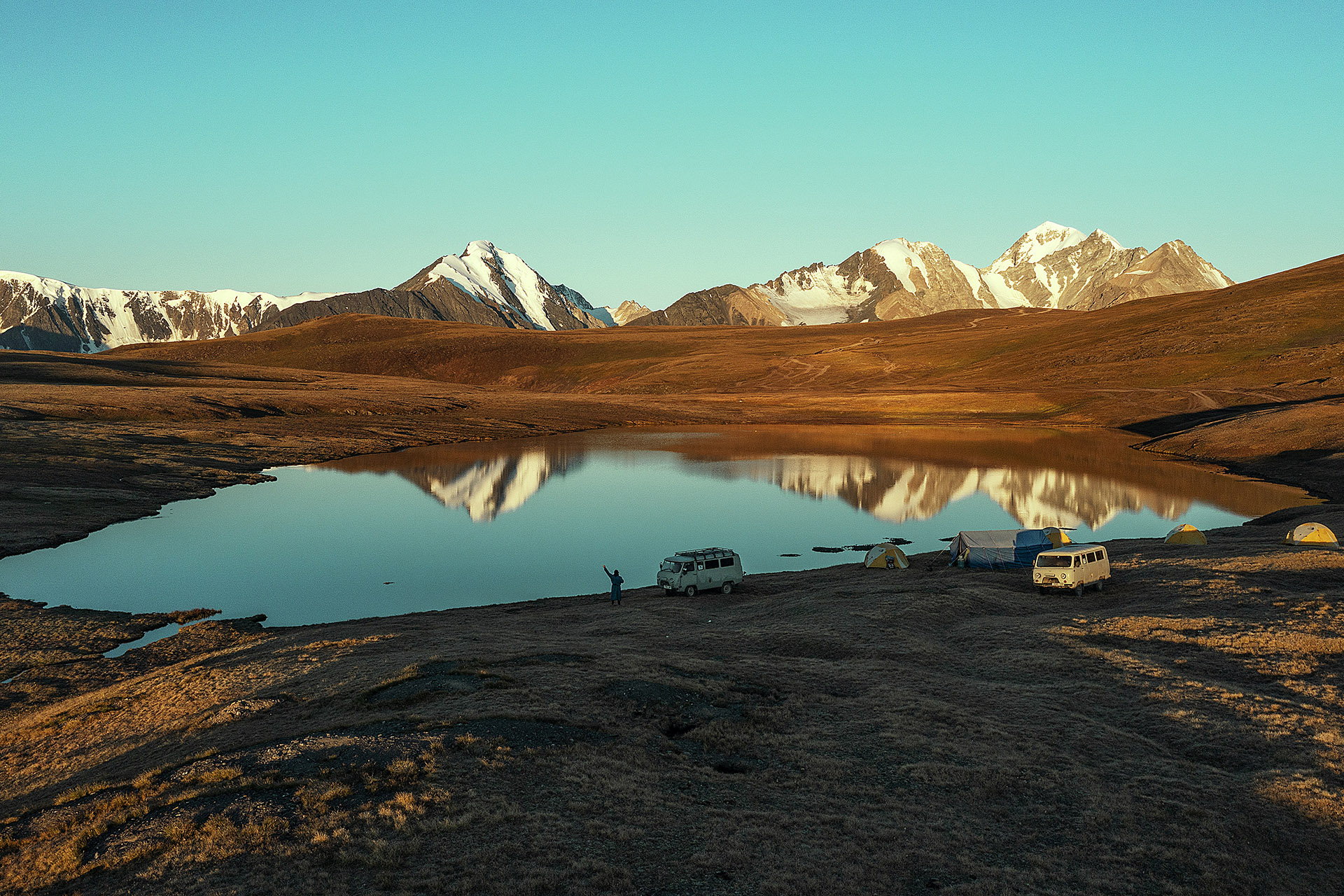Altai Tavan Bogd National Park (Altai five saints nature complex) is a national park in Bayan-Ölgii Province of western Mongolia. The park includes the Mongolian side of the Tavan Bogd massif, which is divided by the triple border with Russia and China in the Altai Mountains. It covers 6362 square kilometres and is located south of Tavan Bogd, the highest mountain of Mongolia. Most scientists believe that the mountain name comes from the word "mountain with gold." The glaciers are located at an altitude of 3,500-4,000 meters above sea level. The largest glacier are the Potanin Glacier, Alexander Glacier, Granega Glacier. They stretch 15 kilometers in length and are the source of the Tsagaan River. The five highest peaks of Altai Tavan Bogd mountain are Huiten peak 4374 meters, Friendship peak 4082 meters, peak Herdsman 4037 meters, Peak Eagle 4068 meters, Peak Ulgiy 4050 meters. In 1956, mountaineers of Mongolia conquered the Altai Tavan Bogd peak for the first time. Since then, more than 700 climbers have conquered these peaks and they have become the favorite peaks for domestic and foreign mountaineers. It includes the lakes Khoton, Khurgan, and Dayan. The protected area is inhabited by species such as the Argali sheep, Ibex, Red deer, Beech marten, Moose, Snow leopard, Snow cock, and Golden eagle. The (UNESCO) World Heritage Site Petroglyphic Complexes of the Mongolian Altai is located inside Altai Tavan Bogd National Park. The World Heritage Site covers three locations with several thousand petroglyphs and Turkic monoliths, including the Tsagaan Salaa Rock Paintings with over 10,000 cave drawings in 15 km of river valley.
Explore Altai Tavan Bogd
